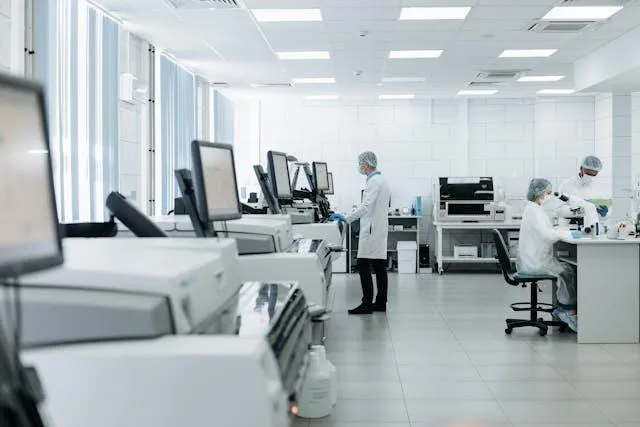LATEST NEWS

Case Study: Supporting a Manufacturer Transitioning to ISO 13485 Compliance
During the COVID-19 pandemic, a manufacturer sought to transition into medical device production, requiring comprehensive support to establish their facility, personnel, and products in line with international regulatory expectations. The manufacturer aimed to achieve ISO 13485 certification through inspection by a Notified Body and ensure compliance with ISO 14971, along with relevant Australian and New Zealand (ANZ) device standards.
Quality Systems Now (QSN) provided end-to-end support, delivering a tailored approach encompassing quality management, personnel training, product development, facility setup, and audit readiness. The project illustrates how a structured, standards-based intervention can prepare a company for regulatory compliance in medical device manufacturing.
Project Overview
The manufacturer required support across multiple domains, including:
Establishing a Quality Management System (QMS) aligned to ISO 13485 and ISO 14971, customised to the company’s processes, products, and facility.
Defining and implementing product and material specifications to ensure regulatory compliance.
Preparing personnel and infrastructure for cleanroom-based manufacturing operations.
Supporting regulatory submissions, documentation, and audit preparedness for Notified Body inspections.
QSN’s engagement covered key deliverables such as QMS development, training, quality assurance (QA) oversight, facility and manufacturing support, product development guidance, regulatory affairs, and audit support.
QMS Development
QSN developed a comprehensive QMS tailored to the manufacturer’s operations, resulting in approximately 200 controlled documents. The system incorporated:
Procedures for document control, risk management, CAPA, change control, and supplier management.
Work instructions customised to production processes, material handling, and product assembly.
Integration of ISO 14971 risk management principles into product lifecycle management.
The QMS was designed to align with both international standards and local ANZ requirements, ensuring regulatory readiness for both domestic and global markets.
Material and Product Controls
A critical element was establishing starting material specifications and testing processes to ensure materials met quality and safety requirements. QSN:
Supported the development of specifications for raw materials used in device production.
Coordinated external testing to verify compliance prior to release into production.
Implemented a manual inwards goods receipt process, including inspection, labelling, and tracking of materials in the warehouse.
These measures provided robust traceability and control over materials, supporting both ISO 13485 and ANZ regulatory compliance.
Facility and Manufacturing Support
QSN guided the company in setting up compliant manufacturing operations, focusing on personnel, material, and product flows. Key contributions included:
Advising on cleanroom layout, including workflow optimization and zoning.
Defining qualification requirements for equipment and personnel.
Supporting cleanroom gowning and cleaning processes, including SOP development and staff training.
Assisting the QA and Production Managers in implementing release for supply and final inspection procedures, introducing new processes to ensure regulatory compliance.
This comprehensive support ensured that production operations were audit-ready and aligned with best practices for medical device manufacturing.
Training and Capability Building
A significant component of the project involved training key personnel in both regulatory requirements and operational practices:
ISO 13485 awareness training for QA and production staff.
Practical instruction in cleanroom gowning and cleaning protocols.
Guidance on risk-based decision-making under ISO 14971.
The training ensured that personnel understood both the rationale for compliance activities and the practical steps needed to implement them in day-to-day operations.
Product Development and Documentation
QSN supported the manufacturer in developing documentation to demonstrate compliance across the product lifecycle:
Reviewed validation protocols prepared by subject matter experts to ensure alignment with regulatory expectations.
Drafted study reports supporting the technical file for each device.
Collated or drafted documentation for Summary Technical Documentation (STED) in collaboration with the Regulatory Affairs team.
These efforts ensured that the manufacturer could provide a complete and compliant submission to the Notified Body, demonstrating conformity with ISO 13485 and relevant ANZ standards.
Audit Readiness and Notified Body Support
QSN facilitated audit readiness activities, preparing the manufacturer for two Notified Body inspections. Services included:
Internal gap analysis and mock audits to identify and address deficiencies prior to inspection.
On-site support during audits, including responding to auditor queries and providing guidance on QMS and operational compliance.
Post-audit corrective action planning and documentation support.
This structured approach helped the manufacturer successfully navigate complex regulatory scrutiny and achieve inspection readiness.
Outcomes
The collaboration with QSN enabled the manufacturer to:
Establish a fully compliant ISO 13485 QMS integrated with risk management and ANZ-specific requirements.
Develop robust material controls, cleanroom procedures, and production workflows.
Build staff capability through targeted training programs in compliance, QA, and operational best practices.
Produce complete and compliant regulatory documentation, including validation reports and STED files.
Successfully engage with a Notified Body, with full audit support ensuring readiness for inspections.
Conclusion
This case study demonstrates how Quality Systems Now provides end-to-end support for manufacturers transitioning into medical device production. By combining standards expertise, practical implementation, personnel training, and audit support, QSN ensured the company was fully prepared for regulatory inspection and compliant operations.
The project highlights the importance of integrating ISO 13485, ISO 14971, and local ANZ standards into a comprehensive QMS, establishing operational excellence and regulatory readiness in a challenging and evolving medical device landscape.
